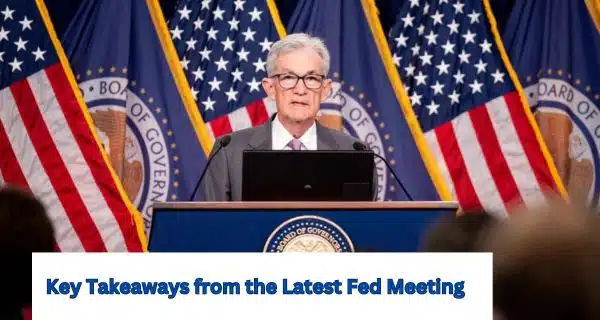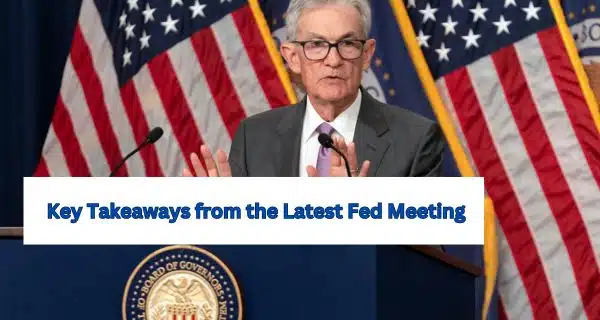Key Takeaways from the Latest Fed Meeting
The Fed meeting took place on July 31. Federal Reserve Chairman Jerome Powell hinted at possible rate cuts in the coming months, which could lower borrowing costs for Americans. Although the Fed has maintained current rates, officials are cautious about labor market risks. Powell expressed confidence in recent inflation progress but stressed the importance of balancing economic stability with the health of the job market.
Federal Reserve Signals Potential Rate Cuts
Federal Reserve Chair Jerome Powell hinted that the Fed might cut its benchmark lending rate in the coming months. This move could lead to lower borrowing costs for Americans, impacting mortgages, car loans, and credit cards. While the Fed has decided to maintain current rates, officials are cautious about risks to the labor market, which has been a cornerstone of economic strength.

Inflation’s Progress and Economic Resilience
During his post-meeting news conference, Powell expressed confidence in the recent progress against inflation, citing positive data from the second quarter. He emphasized that although the job market has returned to pre-pandemic norms, any further cooling could be worrisome. Powell highlighted that maintaining economic stability is a key focus for the Fed.
Interest Rates Remain Steady, but Cuts May Follow
The Fed’s latest policy statement suggests a shift in how officials view inflation compared to their June meeting. This change indicates that interest rate cuts could begin as early as the next policy meeting in September, potentially easing borrowing pressures on households and businesses. Powell acknowledged the difficulty in timing these rate cuts, stressing the potential consequences of acting too soon or too late.
Chicago Fed President Warns of Inflation-Adjusted Interest Rates
Austan Goolsbee, President of the Chicago Fed, cautioned about the effects of inflation-adjusted interest rates. If inflation slows while rates remain unchanged, it could strain the labor market. The Fed aims to stabilize prices while maximizing employment, making the timing of rate adjustments crucial.

Powell Confident About Inflation and Economic Growth
Powell expressed optimism about inflation’s slowdown and the economy’s resilience. He noted that inflation has eased significantly over the past few years but remains slightly above the Fed’s long-term goal of 2%. The Fed’s preferred inflation measure, the Personal Consumption Expenditures Index, showed a decrease in consumer prices, moving closer to the target. Powell emphasized the importance of balancing inflation control with economic growth.
Also Read: How Was Hamas Leader Ismail Haniyeh Killed? Here’s What We Know So Far
Focus on the Job Market
The job market’s future is now a priority for the Fed. Powell described the current state as a “gradual normalization,” with slower hiring, decreased labor demand, and higher unemployment rates. He stressed the need to monitor any significant downturns, indicating that the Fed would respond to major changes in the labor market.
An Unusual Economic Cycle
The combination of slower inflation and stronger growth is unprecedented. The Fed’s strategy of cooling the economy through higher interest rates contrasts with recent GDP growth. Powell acknowledged the uncertainty of future economic developments, citing the pandemic’s impact on conventional financial wisdom. Despite a year of high interest rates, signs of economic weakness are emerging, with consumers becoming more cautious in their spending.
In summary, the latest Fed meeting highlighted the challenges and complexities of managing inflation, interest rates, and economic growth. As the Fed navigates these issues, its decisions will significantly impact the US economy in the coming months.
